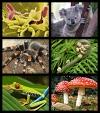Biodiversity represents the variability in genes, speciation and ecological features present on Earth, which allow for the functioning of ecosystems, interactions between species and the complexity of individual species. Biodiversity is a fundamental feature which society is dependent upon. For instance, all of the ecosystem services which society capitalizes on are a result of biodiversity in action.
Biodiversity is the foundation of all ecosystem services. Ecosystem services can be viewed as provisioning services such as food, regulatory services such as when used for disease control, or cultural services and supporting services such as in nutrient cycling1. Furthermore, biodiversity is used to produce many ecosystem goods, is essential for food security and provides resistance against natural hazards.
For example, Cavendish bananas, a very popular fruit, are at risk of a possible extinction similar to what happened to a particular strain of potato during the Irish Famine due to low genetic diversity. Currently, Cavendish bananas are the supermarkets top choice for bananas sold worldwide, but they are at risk from a fungal disease known as black sigatoka, which could wipe out the entirety of Cavendish bananas2. Unlike other organisms which can generate genetic diversity through sexual selection, and thus increase their ability for disease resistance, bananas are propagated from identical clone plants and not seeds3. Although there is more than 1 variety of bananas grown, some others are not edible or are not as nutritious as this variety. This is largely problematic, not only in terms of economics, but for developing countries in which Cavendish bananas are a cheap, nutritious dietary staple2.
Biodiversity is extremely valuable for every aspect of society. Biodiversity allows for sound ecosystem functioning and the patterns of species diversity seen across the globe. Thus, if not conserved properly, the long-term benefits of biodiversity may be lost forever.
References:
1. IUCN (International Union for Conservation on Nature). (2013). Conserving the diversity of life. Retrieved from http://www.iucn.org/what/biodiversity/
2. Smithsonian.com. (2005). Building a Better Banana. Retrieved from http://www.smithsonianmag.com/people-places/building-a-better-banana-70543194/?c=y&page=1
3. MSN News. (2013). Is it time to say 'bye-bye' to the banana? Retrieved from http://news.msn.com/science-technology/is-it-time-to-say-bye-bye-to-the-banana
Title Image Credit: Flickr
© BrainMass Inc. brainmass.com April 18, 2024, 1:01 am ad1c9bdddf


